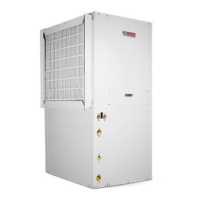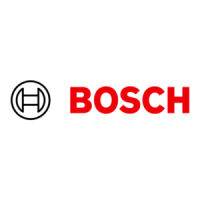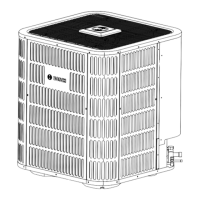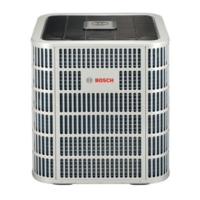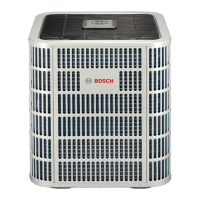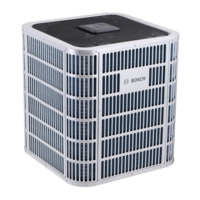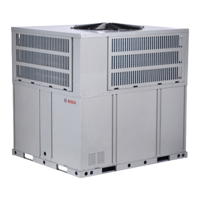6 720 220 045
Revised 05-12 Subject to change without prior notice
29
CP/BP Series
Troubleshooting
TROUBLESHOOTING
Problem Possible Cause Checks and Corrections
Entire unit
does not run
Power Supply Off Apply power, close disconnect
Blown Fuse Replace fuse or reset circuit breaker. Check for correct fuses
Voltage Supply Low If voltage is below minimum voltage specied on unit data plate,
contact local power company.
Thermostat Set the fan to “ON”, the fan should run. Set thermostat to “COOL”
and lowest temperature setting, the unit should run in the cooling
mode (reversing valve energized). Set unit to “HEAT” and the highest
temperature setting, the unit should run in the heating mode (reversing
valve deenergized).
If neither the blower or compressor run in all three cases, the
thermostat could be miswired or faulty. To ensure miswired or faulty
thermostat verify that 24 volts is available at the low voltage terminal
strip between “R” and “C”, “Y” and “C”, and “O” and “C”. If the blower
does not operate, verify 24 volts between terminals “G” and “C”.
Replace the thermostat if defective.
Blower
operates but
compressor
does not
Thermostat Check setting, calibration, and wiring
Wiring Check for loose or broken wires at compressor, capacitor, or contactor
Safety Controls Check UPM board red default L.E.D. for Blink Code
Compressor
overload open
If the compressor is cool and the overload will not reset, replace
compressor
Compressor motor
grounded
Internal winding grounded to the compressor shell. Replace
compressor.
Compressor
windings Open
After compressor has cooled, check continuity of the compressor
windings. If the windings are open, replace the compressor
Unit off on
high pressure
control
Discharge pressure
too high
In “COOLING” mode: Lack of or inadequate water ow. Entering water
temperature is too warm. Scaled or plugged condenser.
In “HEATING” mode: Lack of or inadequate air ow. Blower inoperative,
clogged lter or restrictions in duct work
Refrigerant charge The unit is overcharged with refrigerant. Reclaim refrigerant, evacuate
and recharge with factor recommended charge.
High pressure Check for defective or improperly calibrated high pressure switch.
Unit off on
low pressure
control
Suction pressure
too low
In “COOLING” mode: Lack of or inadequate air ow. Entering
air temperature is too cold. Blower inoperative, clogged lter or
restrictions in duct work
In “HEATING” mode: Lack of or inadequate water ow. Entering water
temperature is too cold. Scaled or plugged condenser.
Refrigerant charge The unit is low on refrigerant. Check for refrigerant leak, repair,
evacuate and recharge with factory recommended charge.
Low pressure
switch
Check for defective or improperly calibrated low pressure switch.
Unit short
cycles
Unit oversized Recalculate heating and or cooling loads.
Thermostat Thermostat installed near a supply air grill; relocate thermostat.
Readjust heat anticipator.
Wiring and controls Check for defective or improperly calibrated low pressure switch.
